Growing cucumbers in your garden might seem simple—just pick them when you need them. However, even harvesting cucumbers has its own rules and taboos. Should you pick them in the morning or evening? By hand or with a tool? Before or after watering? Read on to find out.
Table of contents
When Is the Best Time to Harvest Cucumbers: Morning or Evening?
When should you harvest cucumbers? At any convenient time, depending on their ripeness, size, and intended use. However, it’s best to harvest early in the morning or late in the evening, as cucumbers retain more moisture during these times, keeping them crisp and fresh.
Important! Do not twist cucumbers off by hand. Use pruning shears or a knife instead, leaving the stems on the vines.
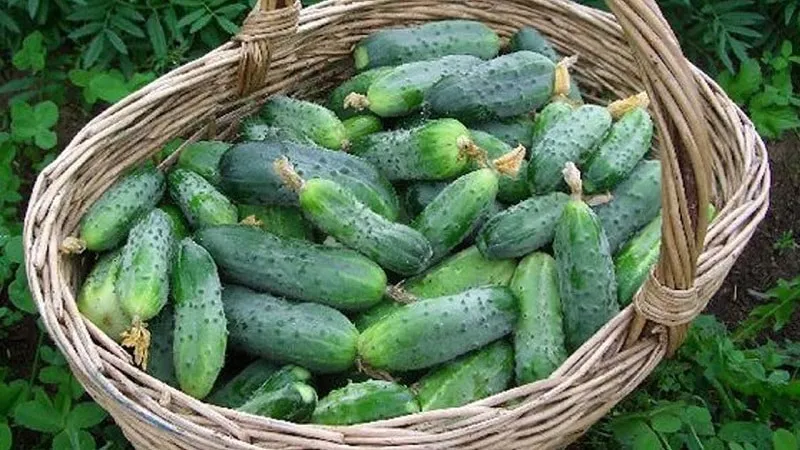
Avoid tugging or pulling the fruits, and do not flip the leaves, as this can damage the plant and its roots.
After harvesting, store cucumbers in a cool place and cover them with a cloth to protect them from wind and sunlight.
Harvesting Cucumbers in June
To harvest cucumbers in June, start by planting seedlings in late March or early April. Transplant them into open ground in early May.
Note. One of the earliest varieties is the hybrid Corinto F1. Sprouts appear 39-41 days after planting, with fruits reaching up to 10 cm in length. Yields can reach 23-26 kg per square meter. This variety has a long fruiting period, resistance to fungi, and is self-pollinating.
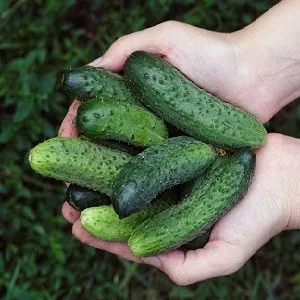 For an early harvest, follow these steps:
For an early harvest, follow these steps:
- Dig a trench about one and a half spade depths deep.
- Fill it one-third with aged manure.
- Add fertilizer—such as wood ash or a balanced NPK fertilizer.
- Top with a 10-15 cm layer of soil mixed with compost.
- Plant seedlings, spacing them five plants per meter.
- Cover with a non-woven fabric and a layer of polyethylene film.
- Once the plants develop tendrils, remove the cover and tie them to trellises.
For a high-quality yield, maintain proper watering. Water daily in hot weather and reduce frequency during rainy or cool days. Avoid overwatering, as it can affect flavor.
Important! Remove side shoots—they drain nutrients from the main vines. Prevent overcrowding to maximize yield.
Harvest cucumbers as soon as they reach the desired size. Frequent picking encourages more fruit production.
Harvesting in Greenhouses vs. Open Fields
Greenhouse cultivation allows for earlier harvests—sometimes as early as March. Several varieties are specifically bred for greenhouse conditions.
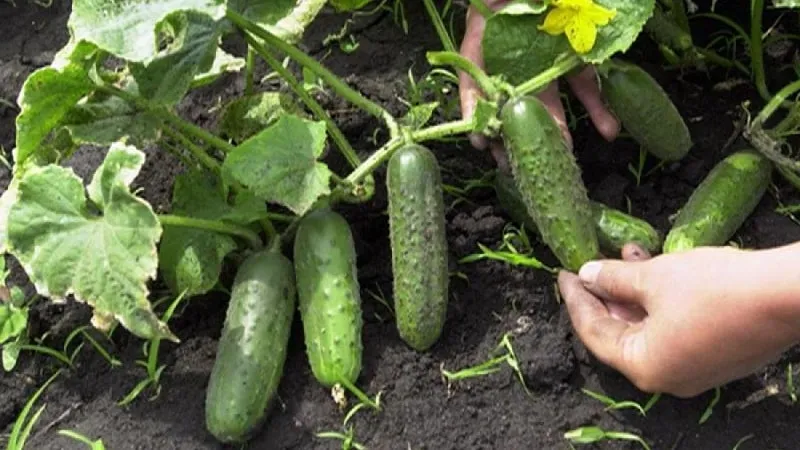
Self-pollinating varieties include:
- Marina F1;
- Emerald Cascade F1;
- Jade Stream F1;
- Corinna F1.
Bee-pollinated varieties:
- Iris F1;
- Delicacy;
- Madame F1;
- Elegant;
- Alligator F1;
- Pickling.
Mid-season varieties suitable for both greenhouses and open fields:
- Asian Disease-Resistant F1;
- Golden Nugget;
- Little Sister F1;
- Spring F1;
- Libelle F1.
Late-season varieties for open fields:
- Neapolitan;
- Homestead F1;
- Crunch F1.
Hybrid cucumbers (F1) offer high yields, disease resistance, and varied pollination types.
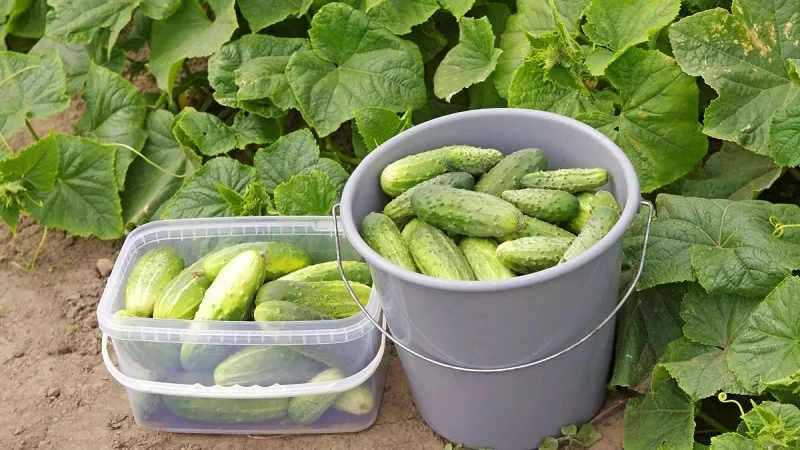
To maximize yield:
- Maintain temperature: 25-27°C for young plants, 27-30°C during fruiting.
- Avoid drastic nighttime temperature drops.
- Water in the early morning every 3-4 days with warm water, avoiding leaves.
- Increase watering during flowering and hot weather to boost humidity.
- If soil wasn’t pre-fertilized, use mineral supplements—but stop feeding three weeks before harvest.
What Size Cucumbers Are Best for Harvesting?
For snacking, pick small, tender cucumbers. For seeds, wait until they grow large.
Harvest every two days. Overripe cucumbers become tough, bitter, and hinder new growth.
Signs of ripeness:
- Firm texture;
- Dried flower remnants;
- Uniform color at the stem end;
- Dried tip.
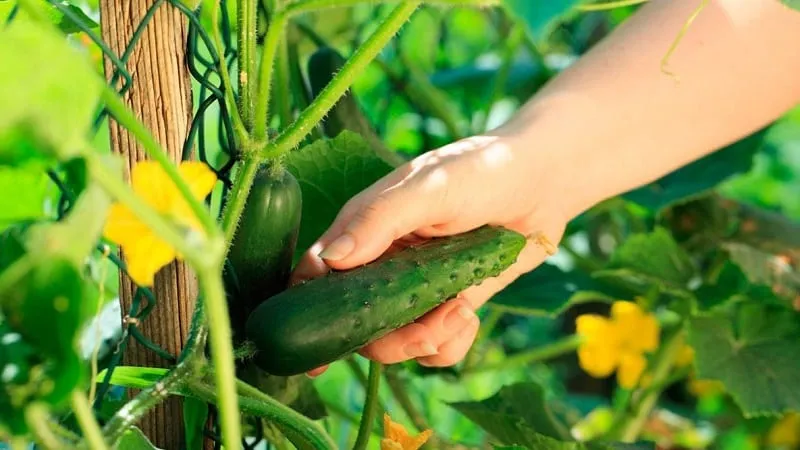
Harvesting Based on Intended Use
Pick cucumbers at different stages depending on their purpose.
For fresh eating or salads, harvest at 10 cm or longer.
Size depends on:
- Variety;
- Growing method;
- Soil nutrients.
For pickling, collect cucumbers 8-10 cm long. For fermenting, 8-18 cm.
For specialty recipes, use tiny cucumbers (3-4 cm).
For seed saving, avoid hybrids—only use open-pollinated varieties.
Storing the Harvest
Store fresh cucumbers in the refrigerator at 6-8°C and 85-95% humidity to prevent wilting.
Place them in an unsealed plastic bag on the bottom shelf or cover with a damp cloth.
Important! Never seal cucumbers airtight—they’ll spoil within days.
For cellar storage, use crates lined with plastic wrap or enameled pots with lids to retain moisture.
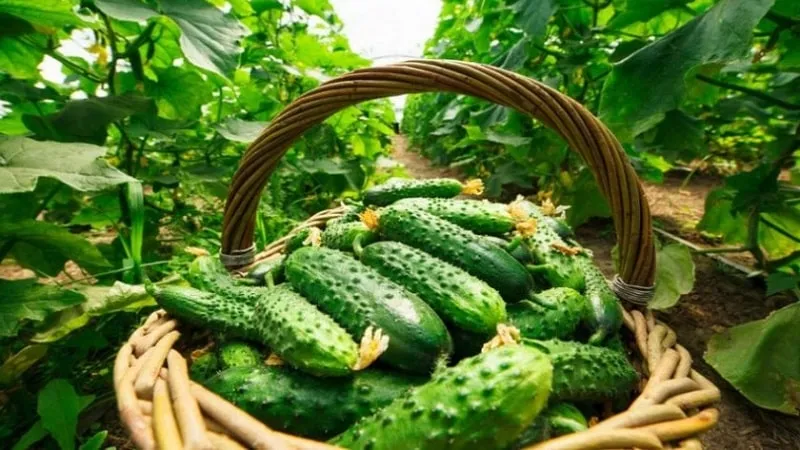
For short-term storage, stand cucumbers in water like a bouquet, submerging only the stems. Change water daily.
For long-term freshness, use glass jars with grated horseradish:
- Sterilize jars in an oven.
- Rinse with boiled water and dry carefully.
- Add a 2 cm layer of horseradish.
- Pack cucumbers tightly.
- Seal with sterilized lids or vacuum-seal.
- Store in a cool, dark place.
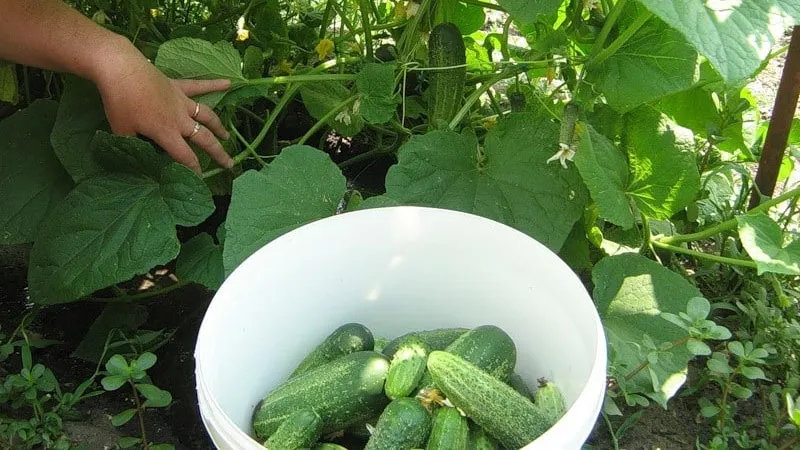
Another preservation method uses egg whites:
- Harvest cucumbers.
- Wash with boiled water and dry thoroughly.
- Coat entirely with egg white.
- Hang by the stem to dry.
This method keeps cucumbers fresh until winter, even without refrigeration.
Conclusion
For immediate use, harvest slightly underripe cucumbers in the morning. For seeds, wait until full maturity. Store in a fridge or cellar for extended freshness. Happy harvesting!







